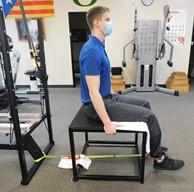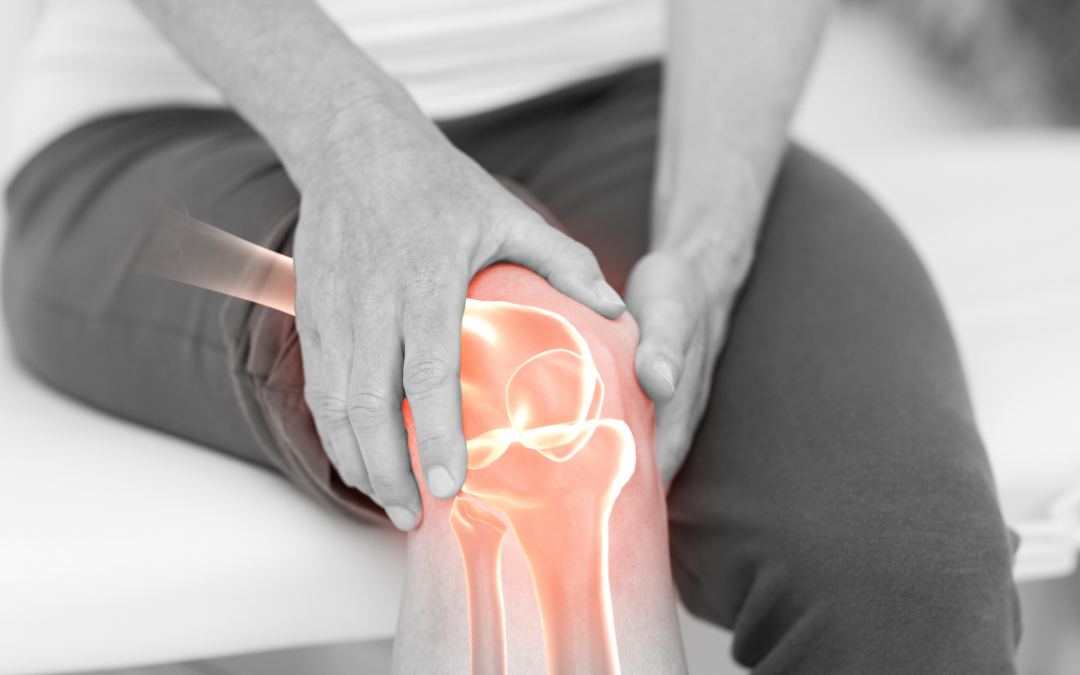1 out of 5 Americans over the age of 40 has some level of osteoarthritis building in their knees. Osteoarthritis is a natural process of joints changing in response to time and to the forces placed on them. Osteoarthritis is affected by “nature” and “nurture” factors such as how much cartilage you were born with, a past history of knee trauma, and your current leg strength levels. Also, there is research showing that a person’s X-rays of knee arthritis severity does not perfectly correlate with how their knee feels. Essentially, a person is NOT their X-ray.
The symptoms of knee arthritis are modifiable based on a person’s strength, knowledge of proper stretches, and their consistent adherence to an exercise program designed by a physical therapist. Read below to learn more about three ways to help your knee feel better and avoid other invasive treatments such as injections or surgery.
1. Improve your quad strength

Research shows that the strength of your quadriceps muscle influences the progression of knee cartilage loss and also can slow down the advancing symptoms of knee arthritis. Ideally, your quad muscle should be able to generate the same amount of torque as your body weight. This amount of strength helps reduce impact on the knee when you go down a flight of stairs, squat, or kneel down to the floor.
At Impact Physical Therapy, we use a strength gage to quantify a client’s quadriceps strength. From there, we can build the appropriate strength program without aggravating a person’s knee pain. There are several exercises to strengthen your quad muscle; remember to find the correct challenge to create change in the muscle (refer to past blogs on lower body strength training). Here are some ideas at home to help get those quads stronger:
Straight Leg Raise
Sit to Stand
Chair Lunge
2. Mobilize your knee joint
Manual therapy is a key part of physical therapy treatment for knee arthritis. Studies consistently show that the addition of manual therapy to an exercise program helps reduce pain and improve function in the short term greater than an exercise program alone. Manual therapy means that a person mobilizes a joint and helps restore the mechanics of knee movement. Manual therapy is different from stretching because it focuses on getting the joint to move better while stretching focuses on the flexibility of muscles around the joint. A physical therapist can apply several different mobilizations to the knee joint depending on the person’s symptoms and location of arthritis. Click the link below to see a self-mobilization for the knee to try at home.
3. Check back in with your PT regularly
Another key to successful knee arthritis management is staying in touch with your physical therapist. In one research study, patients who checked back with their PT once every 2-3 months over the course of a year maintained their strength gains and had less pain than people who stuck to their home program by themselves. These “tune up” visits allow the physical therapist to adjust the client’s home program for optimal results. These check-ins also provide some built-in accountability for clients. If you have been a patient at Impact before, there is no need to go see your doctor before calling to schedule a “tune up.” So please check back in with us regardless if things are going well or need improvement.

